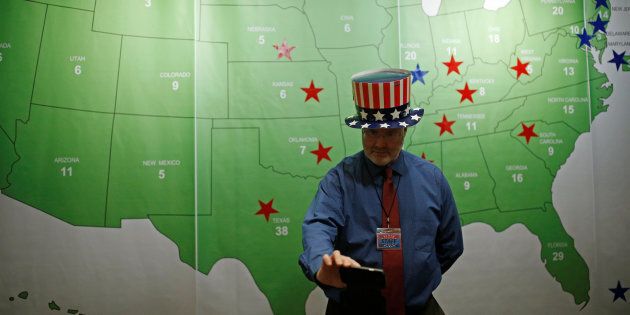
The Electoral College will cast its votes on Monday, either confirming or rejecting the election of Donald Trump as president.
Wait, but what is the Electoral College?
The Electoral College was written into Article 2 of the Constitution as a compromise between those who wanted Congress to choose the president and those who believed the popular vote should decide.
On Election Day, registered voters are actually casting ballots to help determine electors for each state, not the president. The 538 electors are then appointed by political parties in their states. In most states, all electors represent the party that won the popular vote in the state. However, in Maine and Nebraska, the winner of the popular vote in the state gets two electors and an elector goes to the winner of the popular vote in each congressional district in the state.
Each state has the same number of electors as it has U.S. senators and representatives. They can be elected officials, state party leaders, or people with a personal or political connection to one of the presidential candidates.
Below is a breakdown of the number of electors in each state. Hillary Clinton won the popular vote in the blue states, while Trump won it in the red states.
A candidate needs a majority of electoral votes ― at least 270 ― to be elected president. So although Clinton won the popular vote with nearly 3 million more votes, Trump won more electors with victories in states such as Texas (38 electors), Florida (29 electors) and Pennsylvania (20 electors).
The last person elected to the presidency after losing the popular vote was George W. Bush in 2000.
So what’s happening Dec. 19?
Electors generally convene in their respective state Capitols, each casting one vote for president and one for vice president.
Here’s what an Electoral College ballot looks like:
The electors will then send a “certificate of vote” containing the results of their state’s votes to Congress and the National Archives.
Each state’s vote won’t be tallied until Friday, Jan. 6, 2017, during a joint session of Congress led by Vice President Joe Biden.
So the Electoral College could elect Clinton?
It’s possible, but extremely improbable.
While electors pledge to vote for their party’s candidate, they are not legally bound to do so. Some electors ― known as “faithless electors” ― have voted against their political party or abstained from voting all together. Enough of these faithless electors could effectively swing the outcome of the election ― but this has never happened before.
Trump won 306 electors on Nov. 8. In order for Clinton to outright win the Electoral College vote, 38 of Trump’s electors would have to flip.
The chances of this happening are slim, but a group of Electoral College voters are hoping to sway Republican electors into voting against Trump.
Led by two Democratic electors, members of the group have dubbed themselves the “Hamilton Electors” in a nod to Alexander Hamilton ― an original proponent of the Electoral College for its role as one of the necessary “checks and balances” within the government.
Trump’s conflicts of interest and the Russia hack have also fueled speculation about an Electoral College swing, but tallies by The Washington Post, Politico and The Associated Press suggest most ― if not all ― electors will vote according to their respective political parties.
So far, just one elector has publicly declared he will not vote for Trump, despite being selected for him, and will instead vote for GOP primary candidate and Ohio Gov. John Kasich.
OK, but what if she somehow does win?
In the unlikely event the Electoral College votes against Trump and Biden declares Clinton the winner in January, Congress can still challenge the results.
Objections to individual elector votes or state results must be made in writing and signed by two people: a member of the House and a member of the Senate. If, after separate deliberations, both the House and Senate support the objection, the electoral vote is thrown out. This has never happened before either.
If the Electoral College vote results in a tie (269 electoral votes each, or 37 Trump-pledge electors flipping their vote), the House of Representatives would choose the president and the Senate would choose the vice president.
Since the new House, which is sworn in Jan. 3, will be made up of 241 Republicans and 194 Democrats, it seems likely Trump would be confirmed as president in this scenario.
Tl;dr
It’s extremely doubtful Monday’s vote will in any way prevent Trump from being sworn in as the 45th president on Jan. 20, 2017.
An outcome like that would be “unpresidented” ― but never say never?
CORRECTION: An earlier version of this article incorrectly reported an elector publicly declared he would vote for Clinton over Trump. The elector said he would vote for Kasich.
